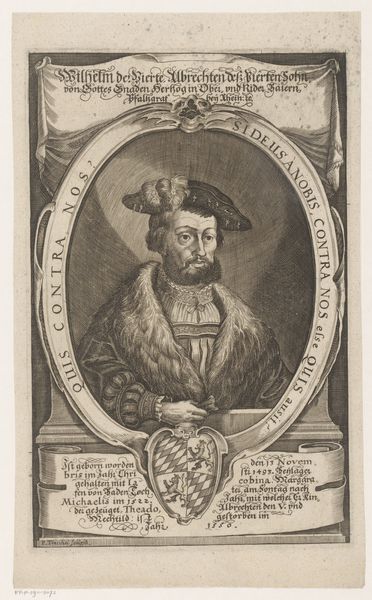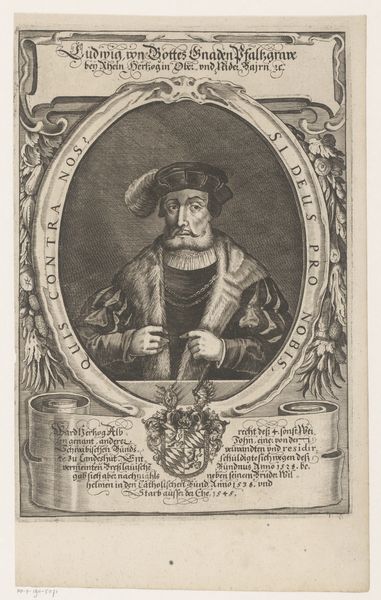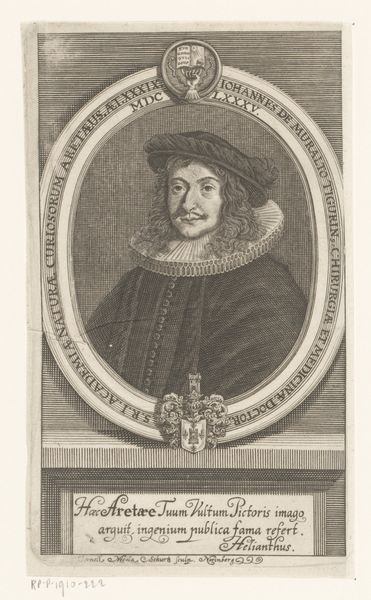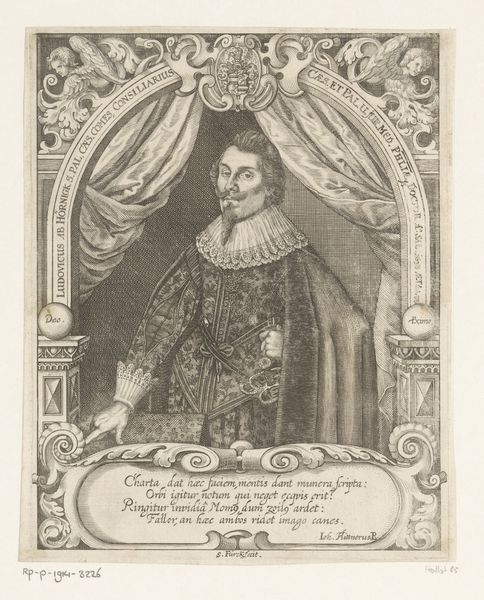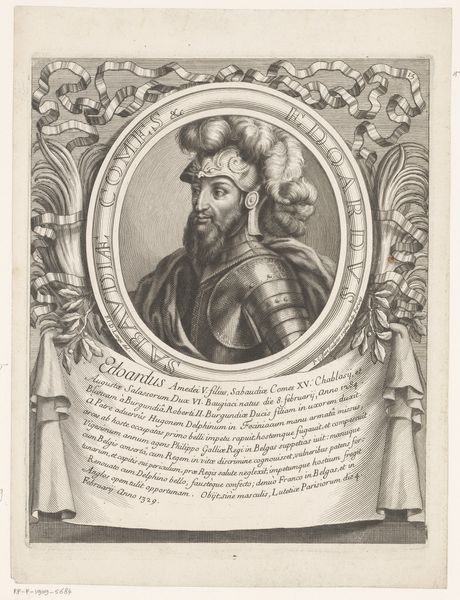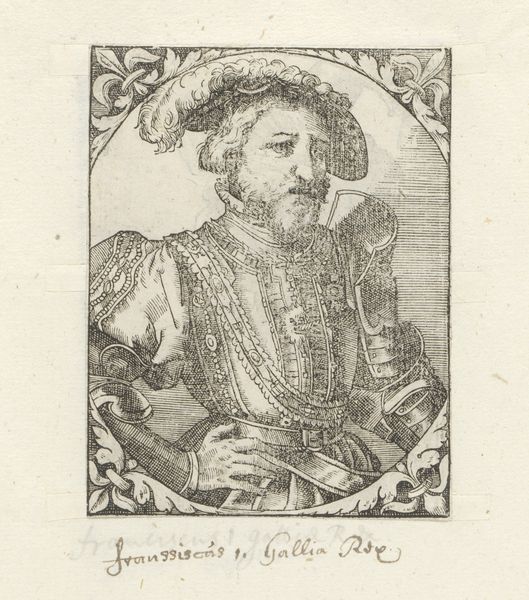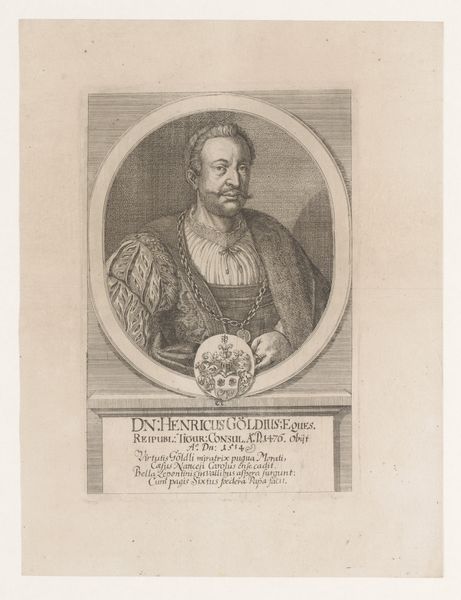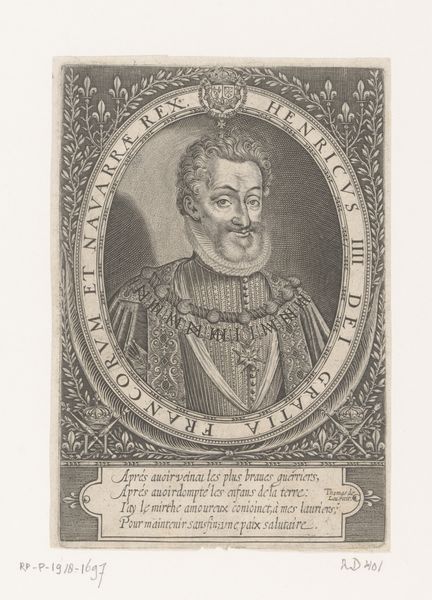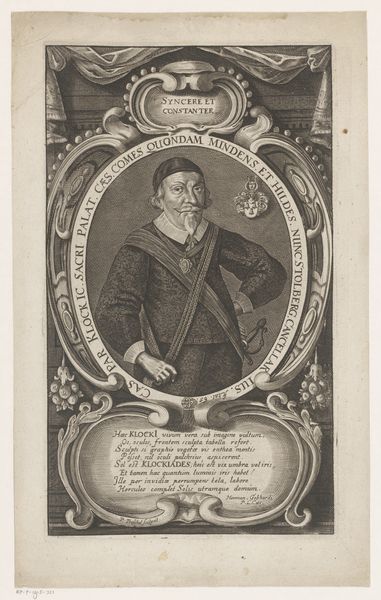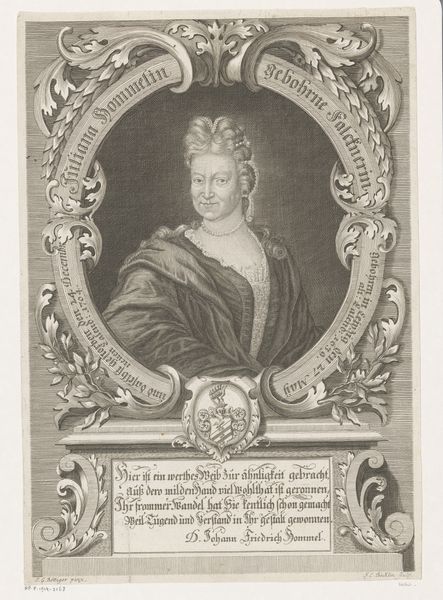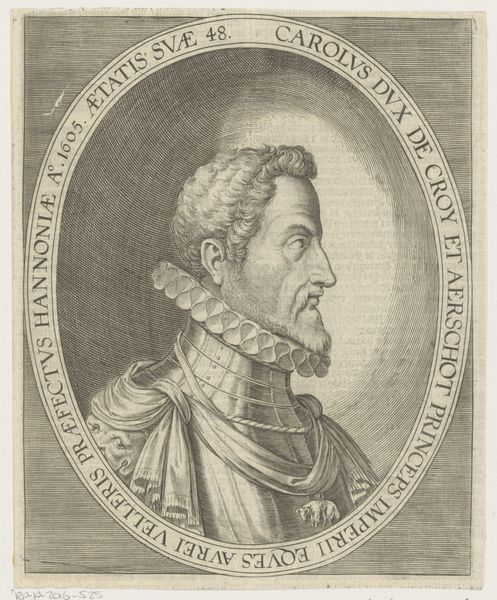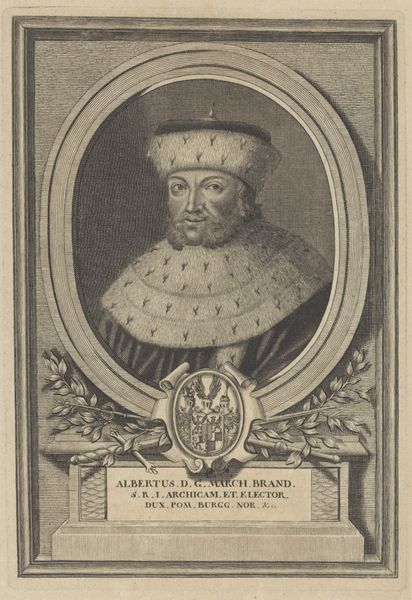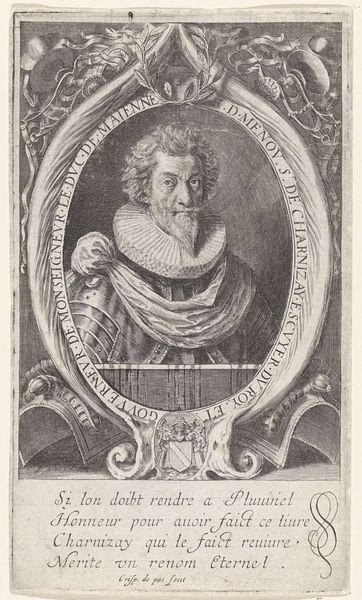
print, engraving
#
portrait
#
baroque
# print
#
engraving
Dimensions: height 268 mm, width 184 mm
Copyright: Rijks Museum: Open Domain
Curator: Here we see an engraving dating from after 1630, a portrait of Heinrich XXIII, Graf von Schwarzburg-Rudolstadt by Peter Troschel. What strikes you first about this image? Editor: The immediate feeling is one of stern formality, but it's tempered by a vulnerability in his gaze, wouldn't you say? It’s also quite ornate for such a seemingly personal portrayal. Curator: Ornate is certainly one word for it. Framing the count is a rather elaborate oval inscribed with "IPSA SIBI PRECIUM est VIRTUS" around its left half, and "est VIRTUS" on the right, the aphorism emphasizing that virtue itself is its own reward. This encapsulates a prevalent concept of noble identity during that period. Editor: True, but this self-referential virtue also comes off a bit... self-congratulatory, given the context. The man's a count. The layers of symbolic presentation almost bury him—the inscription, the coat of arms beneath him... it suggests an anxiety about projecting power and legitimacy. Curator: It also represents the era's visual language, steeped in classical references. The putti flanking the crest certainly underscore the subject's lineage. These pictorial devices were tools to reinforce social hierarchies and historical narratives. The engravings served as replicable testaments to lineage and power. Editor: Right, this was also a period defined by stark societal stratification and consolidation of power. Peter Troschel does his job depicting him and his coat of arms to signify authority. The textures of the fur mantle and feathered hat provide this sense of status, however. We can question to what degree they truly resonate with us today. Is that aristocratic assertion of “virtue” something the public recognizes or relates to now? Curator: Perhaps not directly. Yet the engraving's enduring power lies in its intricate detail and historical resonance. This reminds us how visual symbols shaped and reinforced identity for centuries, even in eras dramatically different from our own. Editor: I agree. By grappling with its layers of meaning, we are given insight into power and social status as much as that time. The work becomes relevant.
Comments
No comments
Be the first to comment and join the conversation on the ultimate creative platform.
